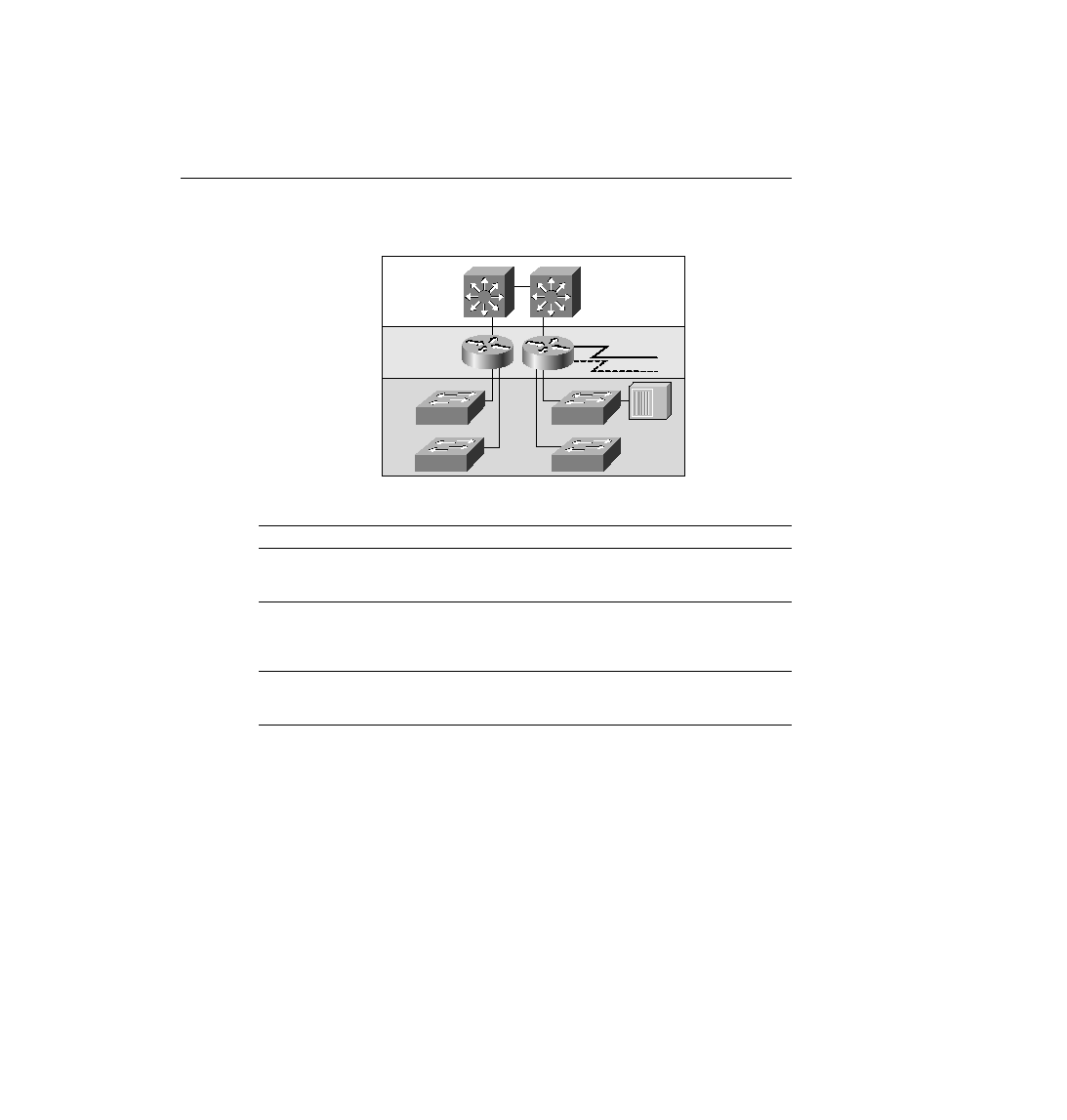
592 Chapter 8: WAN Protocols and Design
Figure 8-32
Core, Distribution, and Access Layers
Cisco expects CCNAs to understand the needs of each of these layers in a typical network.
Conveniently, if router product numbers are listed from low numbers to high, the products that
tend to be listed first are access routers, then distribution, and then core, for the most part. For
instance, Figure 8-33 comes directly from the ICND course, which is one of the two suggested
prerequisites for the CCNA exam. The figure lists the main product families.
Table 8-34
Comparison of Core, Distribution, and Access Layers
Layer
Features
Desired Device Characteristics
Core
Fast transport, often at the topological
center of the network. Packet
manipulation is not performed here.
Highest forwarding speed
Distribution
Aggregation of access points. Any
media translation or security (for
instance, access lists) is performed
here.
High interface density, high processing
capacity per interface for packet
manipulation
Access
Entry point for end-user devices, both
LAN and dial.
High variety of interface types, less
processing capacity required (versus
distribution)
Core Layer
Distribution
Layer
Access
Layer
Switches Traffic
to the Appropriate
Service
Routing, Filtering,
and WAN Access
End Station
Entry Point to
the Network
ch08.fm Page 592 Monday, March 20, 2000 5:17 PM
